


Turning Old Into Gold
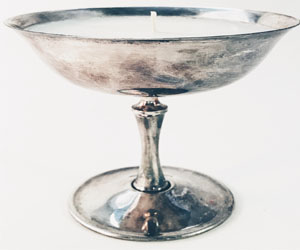
Upcycling, the practice of transforming old or discarded items into something new and useful, is a powerful way to reduce waste and promote sustainability. This eco-friendly trend not only sparks creativity but also contributes to environmental conservation. In this article, we'll explore some sustainable upcycling tips to help you embark on your journey to turning the old into gold while making a positive impact on the planet.
1. Start Small And Simple
If you're new to upcycling, start with smaller, simpler projects. Repurposing a single item, like an old wooden pallet into a coffee table or an empty glass jar into a candle holder, is a great way to dip your toes into the world of upcycling.
2. Gather Inspiration
Before diving into a project, seek inspiration from online platforms, books, or upcycling communities. Ideas are everywhere, and seeing what others have created can fuel your creativity and help you come up with unique, sustainable designs.
3. Choose Quality Over Quantity
When selecting items for upcycling, opt for quality over quantity. Well-made, durable pieces will last longer and provide better raw materials for your projects. This approach ensures your upcycled creations have a longer life as well.
4. Declutter Responsibly
Before tossing old items, consider whether they can be upcycled. Decluttering responsibly by finding new uses for items you no longer need reduces your environmental impact and keeps useful materials out of landfills.
5. DIY Tools And Supplies
Invest in a set of basic DIY tools, like a good-quality glue gun, a sewing machine, and paintbrushes. Having the right tools will make your upcycling projects easier and more enjoyable.
6. Repaint And Refinish
A fresh coat of paint or varnish can breathe new life into many items. Consider repainting furniture or refinishing wooden surfaces to give them a modern, updated look.
7. Mix And Match Materials
Combine different materials to create unique, eclectic pieces. Mixing metals, wood, and fabric, for example, can result in stunning and one-of-a-kind upcycled creations.
8. Salvage And Thrift
Frequent thrift stores, garage sales, and flea markets to find hidden gems with upcycling potential. Salvaging items in this way is a sustainable practice that prevents them from being discarded prematurely.
9. Think About Functionality
While aesthetics are important, consider the functionality of your upcycled items. A beautiful piece that serves a useful purpose will have a more significant impact on your daily life.
10. Share Your Knowledge
As you gain experience, consider sharing your upcycling tips and ideas with others. By spreading the word about sustainable upcycling practices, you can inspire more people to get involved in this eco-friendly endeavor.
11. Join A Community
Joining an upcycling community or social media group can provide you with a platform to learn from others, share your projects, and stay motivated. These communities often offer valuable insights, support, and a sense of belonging.
Sustainable upcycling is a creative and environmentally conscious way to repurpose old items and reduce waste. By following these tips and incorporating upcycling into your lifestyle, you not only save money and express your creativity but also contribute to a more sustainable and eco-friendly world. So, roll up your sleeves, gather some old treasures, and start your upcycling journey today!
A Time-Honored Craft With Global Diversity
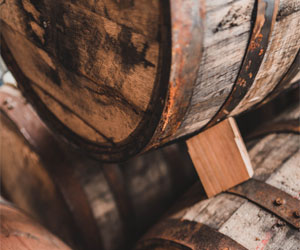 Asian Brewing Traditions: Asia boasts an array of distinctive brewing traditions. Sake, a Japanese rice wine, is an integral part of Japanese culture, with centuries of tradition and craftsmanship. China, on the other hand, has a rich history of brewing rice-based beers like Qingdao, which are now appreciated globally. South Korea is known for its popular rice-based brew, Makgeolli, a traditional and lightly sparkling beverage.
Asian Brewing Traditions: Asia boasts an array of distinctive brewing traditions. Sake, a Japanese rice wine, is an integral part of Japanese culture, with centuries of tradition and craftsmanship. China, on the other hand, has a rich history of brewing rice-based beers like Qingdao, which are now appreciated globally. South Korea is known for its popular rice-based brew, Makgeolli, a traditional and lightly sparkling beverage.
Beer As A Cultural Symbol: Brewing traditions often intertwine with cultural, religious, and social customs. In places like Germany, beer gardens and Oktoberfest celebrations are iconic social gatherings. In Mexico, Day of the Dead festivals include offerings of beer to honor the deceased. Throughout history, beer has played a significant role in ceremonies, rituals, and community bonding.
Global Fusion And Innovation: The brewing world is a global stage where traditions blend and evolve. Brewers often take inspiration from different regions and styles, resulting in fusion brews that incorporate elements of various brewing traditions. For example, the emergence of "Belgo-American" beers combines the brewing traditions of Belgium with the innovative spirit of American craft brewing.



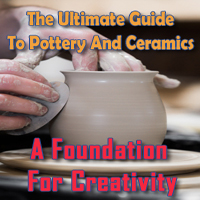
Nurturing Mind And Body
 Crafting also enhances cognitive abilities. It stimulates your brain and challenges it in new and exciting ways. Whether you're following a knitting pattern or solving a design problem in woodworking, crafting requires problem-solving skills, spatial awareness, and attention to detail. Over time, these mental exercises can help sharpen your mind and keep it agile.
Crafting also enhances cognitive abilities. It stimulates your brain and challenges it in new and exciting ways. Whether you're following a knitting pattern or solving a design problem in woodworking, crafting requires problem-solving skills, spatial awareness, and attention to detail. Over time, these mental exercises can help sharpen your mind and keep it agile.
Furthermore, crafting encourages mindfulness. When you're deeply immersed in a creative project, you enter a state of flow, where you lose track of time and are completely absorbed in the task. This meditative quality of crafting can be profoundly calming and is akin to the practice of mindfulness meditation, which has been proven to reduce anxiety and improve mental health.
The sense of accomplishment that comes with completing a craft project can boost self-esteem and self-worth. Seeing your creations come to life can be incredibly rewarding, instilling a sense of pride and purpose. Crafting can also provide a platform for social interaction, as it is often enjoyed in groups or shared with friends and family. This sense of connection can combat loneliness and foster a sense of community, which is vital for overall well-being.
Crafting offers a physical dimension to wellness as well. Many crafts require fine motor skills, hand-eye coordination, and dexterity. For example, activities like knitting, pottery, or jewelry making engage your hands and fingers, helping to maintain their flexibility and strength. In some cases, crafting can even provide low-impact exercise, such as when you're woodworking or engaging in physically demanding hobbies like blacksmithing or glassblowing.
Exploring Candle Crafting Techniques
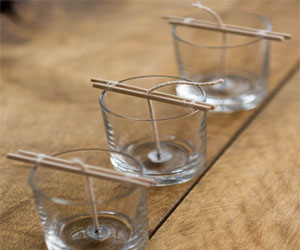 Embedding: Embedding involves placing decorative objects (like dried flowers, seashells, or small figurines) within the candle as it cools and hardens. The objects are preserved within the candle, providing a unique, artistic touch.
Embedding: Embedding involves placing decorative objects (like dried flowers, seashells, or small figurines) within the candle as it cools and hardens. The objects are preserved within the candle, providing a unique, artistic touch.
Marbling And Swirling:
Marbled Candles: Achieve marbling effects by mixing various colored wax and gently swirling them together before pouring into a mold. The result is a candle with beautiful, intertwined patterns.
Swirled Candles: Create captivating swirl patterns by pouring different colored wax into a mold, then using a tool to create swirling designs before the wax solidifies.
Carving And Sculpting:
Carved Candles: Hand-carved candles are true works of art. After the candle has cooled and solidified, use carving tools to create intricate designs and patterns on the candle's surface.
Sculpted Candles: Sculpted candles involve shaping the wax while it's still soft and malleable. This technique allows for the creation of 3D designs and intricate shapes.
Aromatherapy And Scented Candles:
Aromatherapy Candles: Combine the art of candle making with the therapeutic benefits of aromatherapy. Infuse your candles with essential oils, such as lavender or eucalyptus, to create scented candles that promote relaxation and well-being.
Wax Embeds And Inclusions:
Wax Embeds: Add additional wax elements within your candles to create textural interest. These can be in the form of small wax chunks, flakes, or even finely grated wax that creates unique patterns within the candle.
Inclusions: Inclusions refer to adding non-wax elements like herbs, spices, or glitter to your candles. These inclusions can add a visual or aromatic dimension to your candles, making them truly one-of-a-kind.
Double Pour And Gel Candles:
Double Pour: This technique involves pouring a second layer of wax with a different color over an initial layer, creating a visually striking two-toned effect.
Gel Candles: Gel candles are made by using a clear, gel-like wax that allows for embedding decorative elements. The transparency of the gel enhances the visual appeal, making them perfect for decorative and gift candles.
Industry Insights
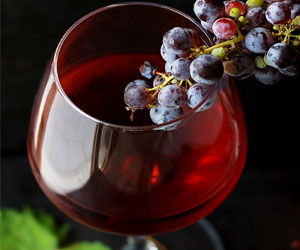 Terroir's Influence: Terroir, a French term referring to the unique combination of soil, climate, and geography in a particular region, plays a pivotal role in winemaking. Each wine region has its distinct terroir, shaping the character of the grapes and, consequently, the wine. The influence of terroir allows for a profound connection between the land and the wine, and it's an essential concept for understanding wine industry nuances.
Terroir's Influence: Terroir, a French term referring to the unique combination of soil, climate, and geography in a particular region, plays a pivotal role in winemaking. Each wine region has its distinct terroir, shaping the character of the grapes and, consequently, the wine. The influence of terroir allows for a profound connection between the land and the wine, and it's an essential concept for understanding wine industry nuances.
Sustainability And Organic Practices: In recent years, there has been a growing emphasis on sustainable and organic winemaking practices. Consumers are increasingly conscious of the environmental impact of their choices, and wineries are responding by adopting eco-friendly approaches. This shift towards sustainability reflects a broader commitment to preserving the natural balance and ensuring the longevity of wine production.
Wine Tourism: Wine tourism has blossomed into a thriving sector of the wine industry. People are not only enjoying wine but also seeking experiences that bring them closer to the heart of winemaking. Vineyard tours, wine tastings, and winery visits have become integral components of the industry, allowing enthusiasts to connect with the process and the people behind the wine.
Emerging Wine Regions: While established wine regions like Bordeaux, Napa Valley, and Tuscany continue to thrive, there is a growing interest in wines from emerging regions. Countries like Chile, Argentina, New Zealand, and South Africa are gaining prominence in the global wine market. Their unique offerings and affordable price points have made them appealing to a broader audience.
Wine Technology: Advancements in technology have significantly impacted the wine industry. From precision viticulture using drones to monitor vineyards to the use of artificial intelligence for predicting optimal harvest times, technology is changing the way wine is produced and marketed. Wineries are also leveraging social media and e-commerce to reach a wider audience and engage with consumers directly.
The Secrets To Healthy Skin And Hair
 Aloe Vera: Often referred to as the "plant of immortality," aloe vera is a powerful natural ingredient for skin and hair. It contains vitamins, minerals, and enzymes that soothe and hydrate the skin, making it an effective remedy for sunburns and irritations. Aloe vera is also known to promote hair growth and reduce dandruff.
Aloe Vera: Often referred to as the "plant of immortality," aloe vera is a powerful natural ingredient for skin and hair. It contains vitamins, minerals, and enzymes that soothe and hydrate the skin, making it an effective remedy for sunburns and irritations. Aloe vera is also known to promote hair growth and reduce dandruff.
Coconut Oil: Rich in fatty acids and vitamins, coconut oil is a beloved ingredient for both skin and hair care. It provides intense moisturization, leaving skin soft and supple, and helps with hair conditioning and preventing split ends.
Honey: Honey is a natural humectant, meaning it helps the skin retain moisture. Its antibacterial properties make it effective in treating acne, while its antioxidants combat signs of aging.
Shea Butter: Shea butter is a skin superfood. It's packed with essential fatty acids and vitamins that provide moisture and aid in skin repair. It's particularly useful for dry and sensitive skin.
Green Tea: Green tea is rich in antioxidants known as polyphenols, which help combat free radicals and inflammation. Consuming green tea or applying it topically can improve skin texture and protect against UV damage.
Avocado: Avocado is a source of healthy fats, vitamins, and minerals. When applied to the skin, it nourishes and revitalizes, leaving it soft and glowing. It can also be used as a hair mask to add moisture and shine.
Vitamin E: Vitamin E is a powerful antioxidant that can protect the skin from damage caused by free radicals and the sun's harmful UV rays. It is commonly found in many skincare products and can also be obtained through diet or supplements.
Jojoba Oil: Jojoba oil closely resembles the skin's natural sebum. It's lightweight and absorbs easily, making it an excellent choice for moisturizing the skin and balancing oil production.
Exploring The World Of Embroidery Stitches
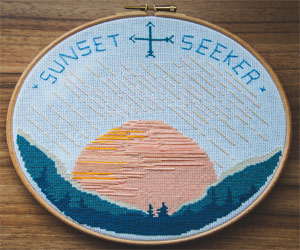 French Knot: A highly decorative stitch that creates raised, textured dots. These knots can be used for flowers, eyes, or other small, ornamental details.
French Knot: A highly decorative stitch that creates raised, textured dots. These knots can be used for flowers, eyes, or other small, ornamental details.
Chain Stitch: A looping stitch that forms a chain-like line. It's versatile and can be used for both lines and filling areas, creating a textured, rope-like appearance.
Feather Stitch: This stitch resembles the delicate fronds of a feather, with stitches on either side of a central line. It is often used to depict leaves, vines, or other organic elements.
Bullion Knot: A stitch that creates a raised, coiled effect. It's perfect for floral and three-dimensional embroidery work, adding depth and dimension.
Embroidery In Culture And Tradition: Regional Stitches
Different cultures around the world have their unique embroidery stitches and styles, often reflecting the traditions, values, and artistic sensibilities of their communities.
Sashiko (Japan): Known for its geometric, repetitive patterns, sashiko uses running stitches to create designs that are both decorative and functional. It's often used for mending and reinforcing fabric.
Crewelwork (England): This traditional embroidery style employs wool threads and intricate stitches to create detailed designs, often depicting pastoral scenes and floral motifs.
Hedebo (Denmark): Characterized by its delicate cutwork and intricate whitework embroidery, Hedebo is a reflection of Danish needlework traditions, often used for table linens and clothing.
Unearthing Value In Vintage And Thrifted Finds
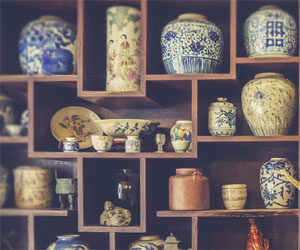 Unique Finds: Secondhand treasures are unique and distinct from mass-produced, contemporary goods. Vintage items often feature designs, craftsmanship, and aesthetics that are no longer readily available in modern markets.
Unique Finds: Secondhand treasures are unique and distinct from mass-produced, contemporary goods. Vintage items often feature designs, craftsmanship, and aesthetics that are no longer readily available in modern markets.
Quality Craftsmanship: Many secondhand items were created during eras when quality and durability were highly valued. These pieces often exhibit superior craftsmanship, making them appealing to those who appreciate well-made goods.
Environmental Consciousness: Secondhand treasures align with eco-conscious lifestyles. By buying used items, consumers reduce the demand for new manufacturing and help minimize waste and carbon emissions.
Historical And Cultural Significance: Secondhand treasures carry history and cultural significance. Each item has its own story and represents a slice of the past, offering a tangible connection to bygone eras.